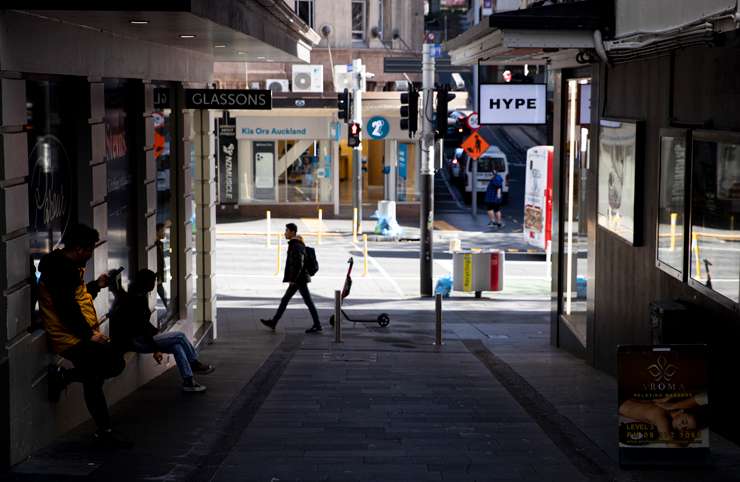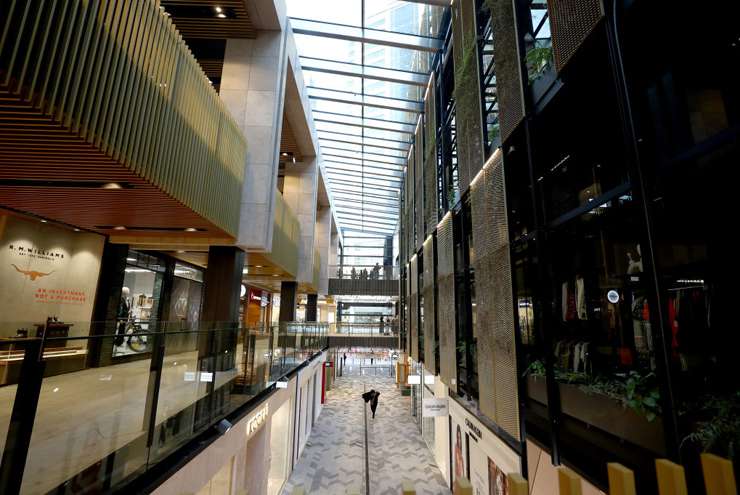Covid-19 is turning New Zealand’s city centres into ghost towns, with the number of vacant shops and offices hitting alarming highs, OneRoof research shows.
OneRoof listing data shows a big increase in the number of unfilled office and retail leases nationwide since April, when the country was in the first week of a lockdown that closed all non-essential of businesses and forced Kiwis to work at home.
Worse still, the OneRoof figures showed a similar spike in the number of active listings advertising a business for sale.
Start your property search
The research suggests the country’s commercial landlords are under extreme pressure and hint at further disruptions for the New Zealand economy, as it deals with a reappearance of the virus and a new lockdown in its biggest city.
According to the OneRoof data, there were 2,689 new listings advertising office space for lease between April 1 and July 31 – up 76 percent on the same period last year.
As of August 10, 89 percent of the listings were still active – meaning the offices had yet to find a new tenant. Over the same period last year, just 46 percent of the office listings were still active.
Of the major metros, Auckland had the highest number of new office lease listings between April 1 and July 31, 91 percent of which were still active on August 10. Over the same period last year, less than half of the 913 listings were still active.

Covid-19 has changed the way people work, with more businesses offering employees the opportunity to continue working from home. Photo / Getty Images
There was also a big increase in the number of new commercial retail leases available between April 1 and July 31 - up 37 percent on the same period last year - with 83 percent of the 1,294 listings still active as of August 10.
Auckland again featured highly and Wellington to a lesser extent.
The figures painted a similarly grim picture for the business market. While there was no significant increase in the number new business for sale listings in the four months since April 1 compared to the same period last year (551 compared to 517), buyers seem to have withdrawn from the market this year. Eighty-three percent of the business listings for 2020 were still active as of the August 10, compared to only 41 percent last year, with hospitality and tourism businesses particularly affected.
Experts say businesses and shops are feeling the pain and that tenants are being extremely cautious at the moment, especially given Auckland is back in alert level three.
‘People are very cautious’
Chris Dibble, Colliers International’s research and communications director, said the amount of vacant commercial property in New Zealand was higher than the company had projected.
Colliers’ latest vacancy survey shows the vacancy rate has increased from a record low of 4.7 percent in December last year to 6.3 percent as of June this year. “We were expecting an increase in vacant space, driven by new office developments coming onto the market place,” Dibble said, but the Covid-19 crisis had put the brakes on the back-filling of offices that had lost tenants to the new developments.

A side-street looking onto Auckland’s main retail strip, Queen Street, before the most recent lockdown. Photo / New Zealand Herald
And he expects the situation worsen, with vacancy unlikely to peak until mid to late next year before improving.
“There’s not a major driver for businesses to expand their office footprint at the moment,” he said, adding that the switch to remote working during the lockdowns would undoubtedly have an impact.
“People are very cautious on what will these new working situations mean for culture and collaboration,” he said.
Landlords who were having difficulty finding tenants should be mindful of what incentives they offer. “If landlords are thinking of incentives around fit-outs they need to be conscious there’s already a lot of space on the market that’s already been fitted out. Landlords may need to consider alternative incentives.”
Paralysis
Lloyd Budd, director Auckland commercial and industrial for Bayleys, said the increase in active leases had been driven by three factors – redundancies, new development stock and the change in working practices. “A lot of businesses still haven’t worked out if they’re going to have a flexi-work policy. There’s almost been a paralysis of decision-making around that as people survey their staff and look at their revenues,” he said.
“I wouldn’t necessarily point the finger at commercial landlords, it’s just that people can’t make decisions. It's not a beat-up on the sector, it's just that the bigger macro-decision-making is quite tough.”
Lizzi Whaley, who runs commercial interior design company Spaceworks, said she had seen an increase in the number of businesses looking to downsize.
“We’ve done the same thing with our space down in Wellington. We’ve got two sub-tenants in there now, mainly because my team are working half the time from home,” she said.
“I think one of the things landlords and building-owners are going to have to look at is space.” Whereas landlords might have previously tried to fill a large 800-1000sqm space one tenant, they might need to cut up that space for several tenants. “What we’re going to be seeing less of are rows and rows of desks,” she said.
Retail under pressure
Greg Harford, CEO of Retail NZ, is not surprised by the OneRoof data - it just reflects the “extraordinarily difficult” time the retail sector is experiencing.
Retail sales to the end of July were down by 10 percent – a huge amount of revenue that’s just vanished. “Retail margins are really small at the best of times. The average net margin is 3.6 per cent so if you’re a retailer, you’re probably looking to cut costs by shifting to smaller premises or reducing the number of stores you have,” he said.

Commercial Bay is one of the many new developments that have come on stream in Auckland. Photo / New Zealand Herald
Harford advised landlords to look closely at rents and terms. “I think it will come down to the length and terms of the lease. How long am I going to be locked in for? What happens if there’s a further lockdown and I’m not allowed to trade? Those are questions landlords will be wanting to front foot.”
Struggling shop owners could look at sub-leasing or diversifying the goods they offer, he said. “I’m aware of businesses that have effectively sub-leased their premises to other businesses looking to downsize as well. There are clothing stores where you can get a glass of wine, a hair-cut and a coffee. We’re likely to see more convergence between service retail and goods retail.”
New opening hours?
Auckland Council’s chief economist, David Norman, said Auckland’s city centre may need to reinvent itself. “We’ve got a retail market in the city centre that is structured around lunchtime traffic but you have stores opening at 8.30am,” he said.
“We’ve kind of just done that for decades and maybe we need to rethink that. Maybe it’s time to start thinking about opening at 10.30am and closing at 7 or 8.30pm.”
He said that while for lease signs during the Global Financial Crisis were a clear indication of how bad things were, the situation now is a bit more nuanced, and may point a business reducing its footprint rather than closing down.
Norman thinks commercial property vacancy will rise but points out there are still people wanting to invest.
“Unlike the GFC we’ve got a world that’s awash with money and it’s looking for somewhere to invest. A lot of investors are looking at property, whether it’s residential or commercial, so you’ll probably see the values of commercial buildings hold up quite strongly but people will be happy to settle for a lower yield because it’s still going to be better than they’re getting in the bank.”
And the bright spot in the commercial property sector is industrial space because of the rise in online shopping.












































































